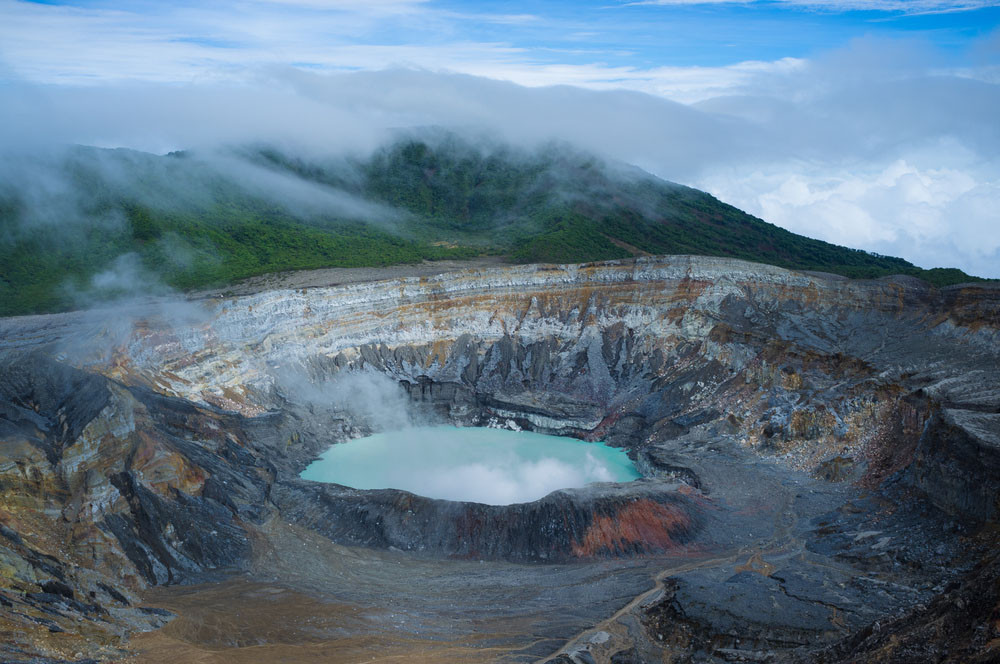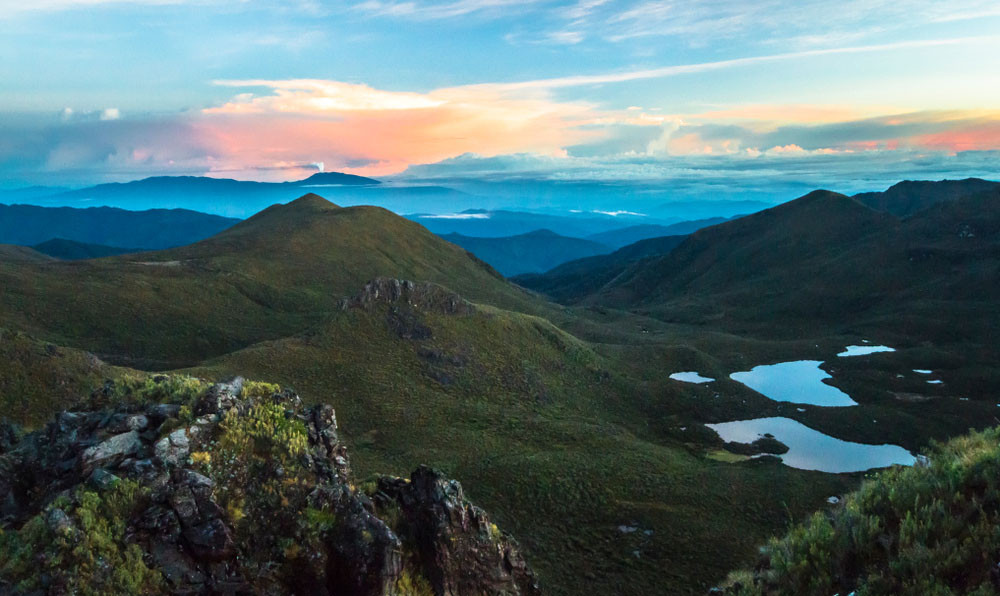Costa Rica is an ecotourism hotspot teeming with biodiversity, breathtaking landscapes and plenty of friendly locals to show you around. This tiny country, like most of Central America, has volcanic origins, and these hot-lava cones have become some of the country’s favorite attractions. Of the more than 209 volcanoes are littered throughout this tiny tropical country, only five are considered to be “active.” Here’s a rundown of Costa Rica’s volcanos that you can oogle at on your explosive Central American holiday.
Poás Volcano

Located in the Alajuela province, this central mountain hot-spot features a giant central crater with an emerald-green rainwater lake called Laguna Botos. At more than a kilometer across and 300 meters deep, Poás Volcano is the largest active crater in the world — it’s bubbling, sulfuric lake is often surrounded by smoke and steam, and it shoots up some impressive geysers, with sprays that can hit more than 250 meters high.
Poas used to be the perfect day-trip from San José — it was actually the most visited national park in the country for a time. Unfortunately, due to increased volcanic activity, the park has closed indefinitely since an early 2017 eruption. There are rumors of reopening in 2018, although nothing has been concretized.
Keep your fingers crossed that this seismic beauty goes back on public display before your Costa Rican holiday — it certainly is a epic site to see.
Irazú Volcano

Costa Rica’s tallest volcano sits just 23 kilometers from San José, and is another excellent day trip if you’re spending time in the country’s capital. At a whopping 3,432 meters above sea level, the Irazú Volcano‘s summit is so high up that the wind-whipped landscape is eerily moon-like. On a rare clear day, when the persistent clouds finally lift, you’re rewarded with simultaneous, breathtaking views of the Pacific and Atlantic oceans.
Pro Tip: Much of Irazú is above tree line, and all of it is above the frost line. Add to that constant winds, humidity and the low temperatures that altitude brings, and you’ve got one of the coldest destinations in Costa Rica. Be sure to pack that extra jacket, or parka. Also leave your hotel early, as you’ll have to get up to the rim and back down before the park closes at 15:30.
Rincón de la Vieja Volcano

This understated Costa Rica volcano park should be a must-visit for natural hot springs afficionados. With nine separate craters, bubbling mud pits, and endless trials, streams and waterfalls to explore, Rincón de la Vieja National Park is a nature-lover’s paradise.
The park sits in the Guanacaste region, less than an hour away from many of the popular north-west beaches. Easy access hiking trails wind through the 14,000 hectare park, which is split into two areas: Santa María, a former cattle farm that’s now a conservation zone, and Las Pailas – the cauldrons – where you’ll find boiling mud pots, steam vents and mini-geysers to delight the seismic-lover.
Wander further afield to find the fumaroles (natural steam vents) and natural hot springs. Unfortunately the main crater of the Rincón de la Vieja Volcano is currently off limits to tourists, however there is enough to see and do at this underrated park that a hike to the summit is hardly missed.
Where to Stay: Camping is allowed inside the park, although you’ll need to keep careful track of time as the entrances and exits are only open from Tuesday to Sunday 7 a.m. to 3 p.m. Otherwise, there are several converted cattle ranches in the area now hosting visitors.
The beautifully restored Hacienda Guachipelín has magical waterfalls and an open-air hot springs spa, while the rustic Rincón de la Vieja Lodge‘s thermal waters have been left in an untouched, natural state.
Turrialba Volcano

Turrialba Volcano, located in the Cartago province, made headlines in October of 2014 when it woke up after more than a century of near-inactivity and spewed a dark ash cloud across central Costa Rica, distributing travel and closing airports for weeks.
Since then, it’s continued activity has led the authorities to close the park to the public — a loss to nature lovers, but nothing compared to tragedies of lost farms and livelihoods that have been suffered throughout the region. The volcano’s slopes used to be home to potato and cattle farmers alike, who along with avid trekkers suffer nostalgia from when Turrialba was green and vibrant.
Visiting Today: Turrialba is an excellent reminder that active volcanoes are, in fact, active and can at any point come back to life in all their fiery glory. To catch sight of this majestic monster at a distance, visitors can head to the town of La Central, located 6 kilometers from the crater, for views.
Arenal Volcano

Of all of Costa Rica’s volcanos, the one you’ve most likely seen on a postcard or an Instagram post is the picture-perfect Arenal Volcano. Sitting just behind the man-made Lake Arenal and next to the charming town of La Fortuna, this perfect cone is synonymous with adventure travel, suspended bridges, ziplining and hot spring spas.
For a while, Arenal regularly coughed up smoke, ash and blazing streams of molten rock, and volcano lovers would flock to the observatory lodges to watch the gleaming lava against the night sky. Although it has since stopped, that doesn’t make Arenal any less interesting if geology excites you.
Arenal’s last eruption — which wiped out three villages — took place in 1968, but the park system has done an excellent job of conserving the lava flow remains. Take a hike through the 1968 park to see the frozen flows, then head off to one of the many hot springs to soak your sore muscles.
Pro Tip: Leaving La Fortuna in direction of the hot springs, there is a small bridge just past Tabacon. Under the bridge is the natural hot river that feeds the spas, where all of the locals go to relax.